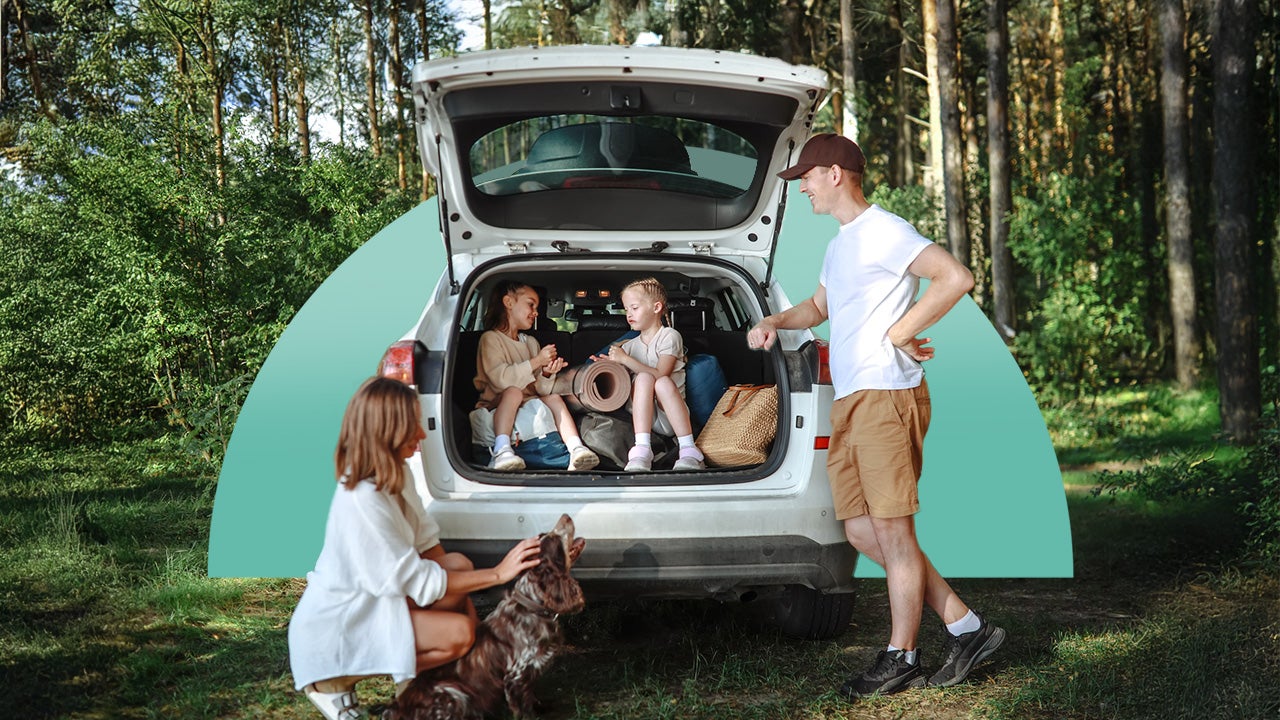Image by Getty Images; Illustration by Bankrate
According to the Bureau of Transportation Statistics, passenger vehicles on U.S. roads are officially older than ever, with an average age of 12.6 years. Ten years ago, the average age of U.S. passenger vehicles was just 11.4 years.
The average vehicle age first hit 12 years in 2021, and it’s seen a steady increase since then, with experts at Hedges & Company projecting an average age of 14.5 years by 2029. While advances in vehicle technology could be extending the functional lifetime of the average car, the increase in vehicle ages over the past few years may also reflect financial pressures that are increasingly impacting Americans’ decisions about car ownership.
Why Americans are keeping their cars longer than ever
To get a sense of why American cars are aging, we spoke to Bankrate staff members who recently made the decision to keep an older vehicle rather than buy a newer one. The cars these staff members own range from 7 to 24 years old, with an average age of 15.7 years.
For our staff members, elements of the decision to keep an older car included:
- Avoiding a car payment: Several staff members cited not wanting a car payment as a primary reason for sticking with an older car. With the average monthly car payment sitting at $742 for new cars and $525 for used cars, it’s a major ask for many 2025 budgets.
- Remote work: Two staff members mentioned that their transportation needs have decreased since they and their partners took remote jobs. For car owners who work from home, a reliable car might not be as high a priority as it otherwise would be.
- Future plans: A few staff members tied their decision not to buy new to life circumstances, such as finishing a graduate degree or planning for a family.
- No itch to buy: While owning an older vehicle comes with additional maintenance (and sometimes stress), staff members generally expressed contentment with their current vehicles.
Bankrate staff stories
Aging vehicles may pose challenges for insurance
Saving money is seemingly a major reason that many U.S. drivers now keep their cars longer than ever. But while keeping an older car may help you avoid a new car payment, it’s important to keep in mind the hidden costs of car ownership, such as insurance, that don’t end when your car loan does.
In the case of insurance, keeping an older car may have certain advantages — but it could also put you at greater risk for big financial losses.
Older vehicles typically cost less to insure
The good news: keeping an older car will usually reduce your month-to-month auto insurance costs.
On average, full coverage for a 10-year-old vehicle costs nearly 30 percent less than the same coverage for a new vehicle. Bankrate analyzed average insurance premiums from Quadrant Information Services for five popular models — the Ford F-150, Honda Civic, Subaru Outback, Tesla Model S and Toyota Camry — and compared rates for 2023 models to 2013 models.
| 2023 model | 2013 model | |
| Ford F-150 | $2,611 | $1,720 |
| Honda Civic | $2,654 | $2,000 |
| Subaru Outback | $2,227 | $1,701 |
| Tesla Model S | $5,484 | $3,208 |
| Toyota Camry | $2,692 | $2,026 |
In our analysis, owners of the older vehicles saved an average of $1,000 per year compared to those who owned a 2023 model.
Older vehicles are more likely to be declared a total loss in the event of an accident
While you’ll usually pay less to insure an older vehicle, there’s a downside: If you’re in a crash, an older vehicle may have a higher chance of being declared a total loss.
In 2024, the average age of vehicles declared a total loss was 10.6 years, compared to just 6.8 years for repairable vehicles, according to CCC Intelligent Solutions. A total loss is declared when the expense of repairing a vehicle exceeds a certain percentage of a car’s value, typically between 60 to 100 percent. Because older vehicles have lower values, it’s generally more likely that the cost of repairs will pass the total loss threshold for these vehicles.
If your insurance company declares your older vehicle a total loss, you could face the challenge of replacing it with a newer car despite receiving a relatively small insurance payout from the totaled vehicle. Depending on your policy’s terms, you may have the option to negotiate with the insurance adjuster, but your payout still may not be enough to support a new vehicle purchase.
Older vehicles may pose greater safety risks
Not only are older vehicles more likely to be totaled following a collision, they may be more likely to get into a collision in the first place.
New vehicles are subject to increasingly rigorous safety standards set by the National Highway Traffic Safety Administration. For instance, all vehicles manufactured after 2011 must have electronic stability control technology. For cars manufactured after 2018, rear backup cameras are mandatory. Other advanced driver assistance systems (ADAS), such as forward collision mitigation and blind-spot monitoring, aren’t yet required by law but are standard on most cars manufactured in recent years.
Driving an older car — especially a car 10 model years old or older — means driving without the benefit of these technologies. Owners of older cars may be at a significantly higher risk of crashes, not to mention higher claim costs in the event of a collision, since many ADAS systems can also reduce crash severity.
That cost could follow you long past the initial repair bill, too. According to Bankrate’s analysis of average quoted premiums from Quadrant Information Services, drivers with a single at-fault accident on their record pay roughly 44 percent more for car insurance than drivers with clean records.
An aging vehicle population impacts everyone
While only your own car’s make, model and age directly impact the cost of your insurance, the shared burden of aging vehicles could be contributing to the overall trend of increasing car insurance costs.
Sharing the road with older vehicles could expose you to a higher level of risk, even if your own vehicle carries the latest safety tech. It also means you could take on steep liability costs if you’re responsible for an accident that results in another driver’s car being totaled. While owners of older cars pay less to insure them, the general population may be paying more overall for the costs they introduce to the auto insurance system.
How to reduce your insurance risk when keeping an older car
Despite the safety and insurance risks posed by keeping an older vehicle, it can still make financial sense for many drivers. However, it’s important to take an active approach to car ownership as your vehicle ages. Consider the following strategies:
- Keep up with maintenance: A well-maintained older vehicle can often last for years. By keeping your vehicle in safe operating condition, you may reduce your odds of an accident and expand the car’s longevity.
- Don’t rush to drop coverage: Once your car loan is paid off, full coverage insurance is no longer a requirement. Still, most older-car owners can still benefit from it, unless you’re comfortable replacing the car without help from an insurance payout.
- Read your policy’s language regarding total losses: Don’t wait until you’re in a crash to understand what your insurance policy will and won’t cover or what your rights are in the event of a total loss. Take time to read your policy, and bring any questions about your coverage to your insurance agent.
- Invest in safe driving: The ADAS tech your older car may lack doesn’t create safe drivers; it simply augments and supports what safe drivers already do. Even if your car doesn’t have backup cameras, electronic stability control or collision mitigation tech, learning safe driving techniques can help lessen your risk of a collision.
- Reduce your driving, if possible: Older car ownership can work best when you’re not fully reliant on your vehicle for daily driving. Working remotely, taking public transportation and skipping long road trips may reduce wear on your vehicle and extend its lifespan while lowering the cost of insurance and reducing your risk of a costly accident.
- Build a backup transportation plan: One of the greatest risks of keeping an older car is the chance that it could stop working abruptly. Make sure that you’re ready to deal with that possibility, either by saving up for a down payment on a newer vehicle or by scoping out alternative modes of transport.
Read the full article here
















